Original Title: From Mining Coins to Mining Intelligence
Original Author: Prathik Desai, Token Dispatch
This article will delve into Galaxy Digital's Q2 2025 financial report, as the digital asset and data center solutions provider prepares for a significant transformation. The company is shifting from its core business (which contributes 95% of revenue but has a profit margin of less than 1%) to a new business model that promises an extraordinarily high revenue-to-expense ratio.
TL;DR
· Galaxy's crypto trading business generated $8.7 billion in revenue but only brought in $13 million in profit (a profit margin of just 0.15%), while quarterly payroll expenses were $18.8 million—resulting in negative cash flow from core operations.
· AI Transformation: Signed a 15-year agreement with CoreWeave for 526MW of capacity, promising to achieve an average annual revenue of over $1 billion in three phases starting in the first half of 2026, with profit margins as high as 90%.
· In a supply-constrained market, Galaxy controls 3.5GW of Texas power capacity, while data center demand is expected to quadruple by 2030.
· Secured $1.4 billion in project financing, validating commercial viability and eliminating execution risk.
· The current model relies on crypto treasury earnings ($198 million in Q2) to fund operations, as returns from capital-intensive trading are minimal.
· The stock price initially rose 17% before retreating, as investors will have to wait until the first half of 2026 to see incremental revenue.
When you look at Galaxy Digital's Q2 financial report, one thing is easy to overlook: what comes next. A closer examination reveals that the company, led by Michael Novogratz, is at a turning point from cyclical crypto trading to more stable AI infrastructure revenue.
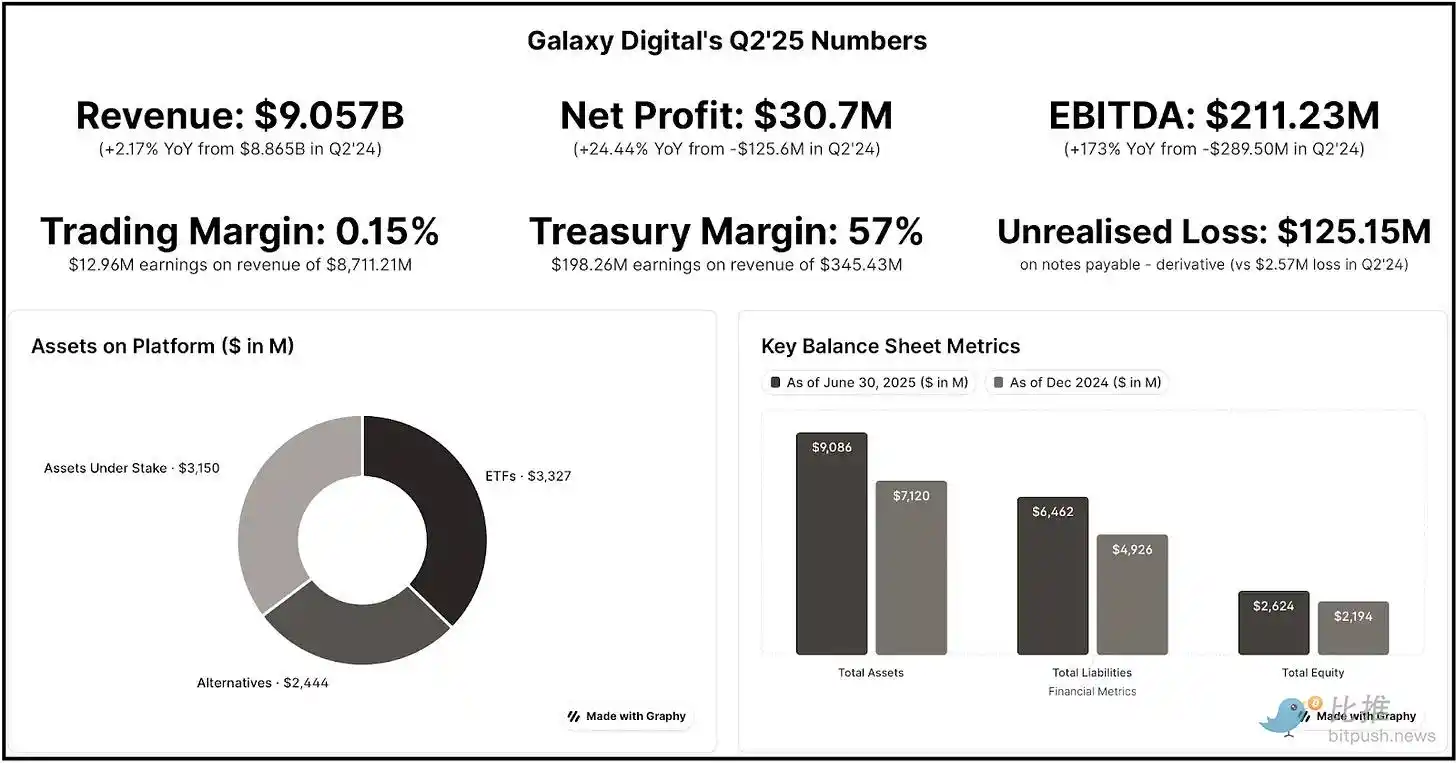
A Gold Mine of AI Infrastructure
Galaxy Digital is undergoing one of the largest business transformations in the crypto space—shifting from low-margin trading to high-margin AI data centers. Galaxy reported a net income of $31 million this quarter, with an adjusted EBITDA (earnings before interest, taxes, depreciation, and amortization) of $211 million after non-cash and unrealized expenses.
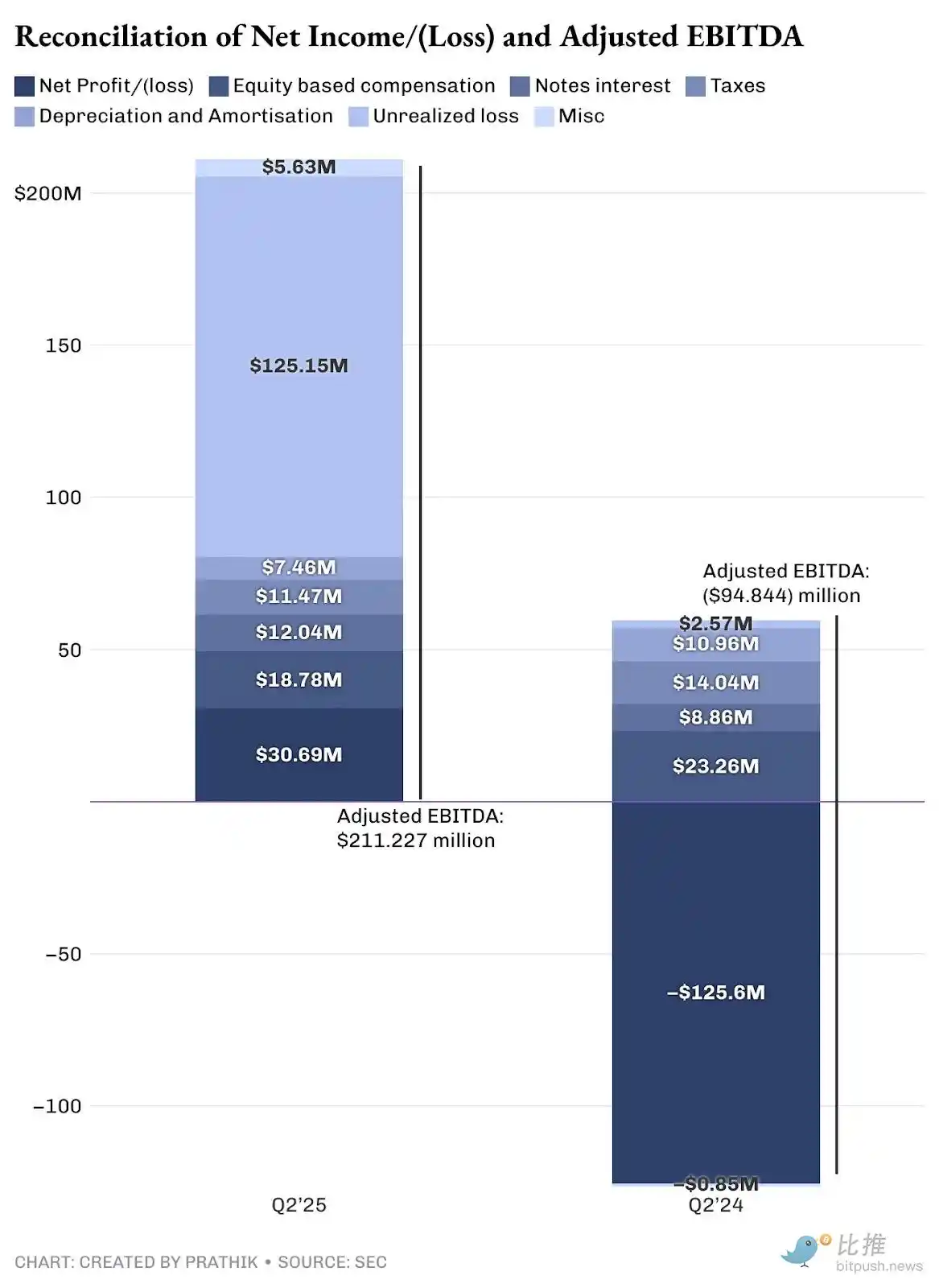
In total revenue, its trading business earned only $13 million from $8.7 billion in sales, with a negligible profit margin of just 0.15%. This means that 95% of its revenue generated almost no profit.
In contrast, their new AI data center contracts promise an average annual revenue of over $1 billion with a 90% profit margin. While I am very optimistic about the construction of AI and high-performance computing capabilities, I believe the promised profit margins are overly exaggerated. This is not just my conjecture; you can compare it to the 46-47% profit margins reported by top AI data center operators Equinix and Digital Realty this quarter.
However, I still believe this direction is correct. Purely from a revenue generation perspective, most of Galaxy's current income comes from its trading business, which is costly and has low margins. Most of its earnings (revenue minus expenses) come from its treasury and corporate divisions.
The treasury division includes investments in digital assets and mining activities, equity investments, and realized and unrealized gains and losses on these digital assets and equity investments.
Its $2 billion treasury serves both as an investment tool under favorable market conditions and as a strategic source of financing.
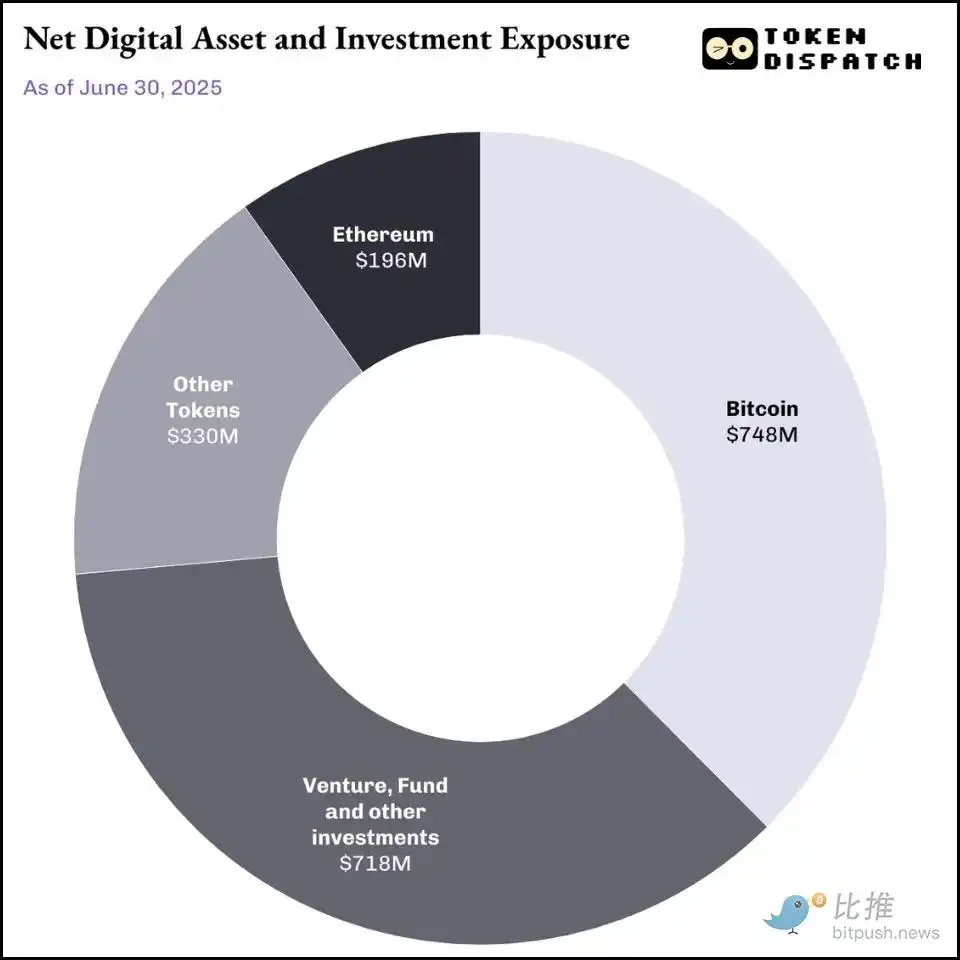
This division generated $198 million in earnings (excluding non-cash unrealized gains). Unlike pure crypto companies, Galaxy's treasury business allows it to raise funds by strategically selling treasury assets at opportune times.
This is where I find Galaxy's approach to its crypto treasury to be fundamentally different from Michael Saylor's Bitcoin treasury. Strategy's "buy, hold, but never sell" approach achieved $14 billion in unrealized gains this quarter. But all of this is just paper profit. Shareholders of Strategy cannot benefit from that $14 billion in unrealized gains.
Galaxy's situation is different. It not only buys and holds crypto assets in its treasury but also engages in strategic sales that generate realized profits. This is real money that shareholders can share.
Nevertheless, I still believe that Galaxy's treasury division is an unreliable source of income. As long as the crypto market is in optimal condition, this division will continue to generate earnings. But neither traditional markets nor crypto markets operate this way. Markets are at best cyclical, which makes these returns heavily dependent on the state of the crypto market.
This is why Galaxy needs its AI transformation to succeed, as its current model is unsustainable.
Market Opportunities
Galaxy positions itself at the intersection of two massive trends: explosive demand for AI computing and the long-standing power infrastructure shortage in the U.S. A report from McKinsey indicates that global data center demand is expected to quadruple from 55GW in 2023 to 219GW by 2030.
Large cloud service providers (Hyperscalers) are expected to invest $800 billion in capital expenditures (CapEx) in data centers by 2028, a 70% increase from 2025, but are constrained by power supply.
Galaxy's advantage lies in its 3.5GW of potential capacity at the Helios site in Texas, enough to power over 700,000 homes in the state. Helios has already secured approval for 800MW, with another 2.7GW under study by the Texas Electric Reliability Council (ERCOT), giving Galaxy control over some of the largest available power capacity in the supply-constrained AI infrastructure market.
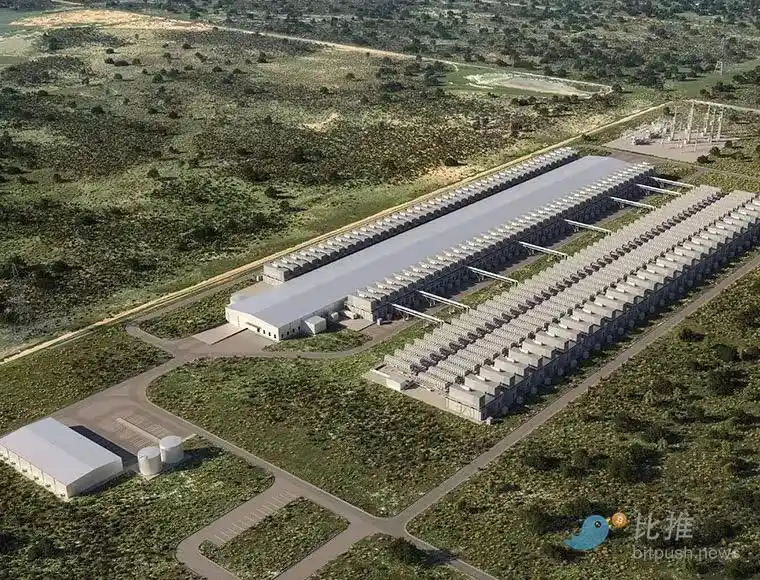
Digital rendering of Galaxy's Helios AI and HPC data center campus in Texas.
The foundation of Galaxy's transformation is a 15-year agreement with CoreWeave, one of the largest AI infrastructure deals in the industry. CoreWeave has committed to using 526MW of critical IT capacity in three phases.
The expected 90% profit margin is attributed to the lightweight operational nature of data center infrastructure once built.
I see a significant risk in the CoreWeave deal: execution. Just as I was contemplating how Galaxy would need to raise funds, plan, and execute, the company has already cleared the first hurdle.
On August 16, Galaxy successfully completed $1.4 billion in project financing for the Helios data center, securing the funds needed to complete the first phase of construction. This gives me more confidence in how it can help eliminate critical financing risks and validate the commercial viability of the Helios project.
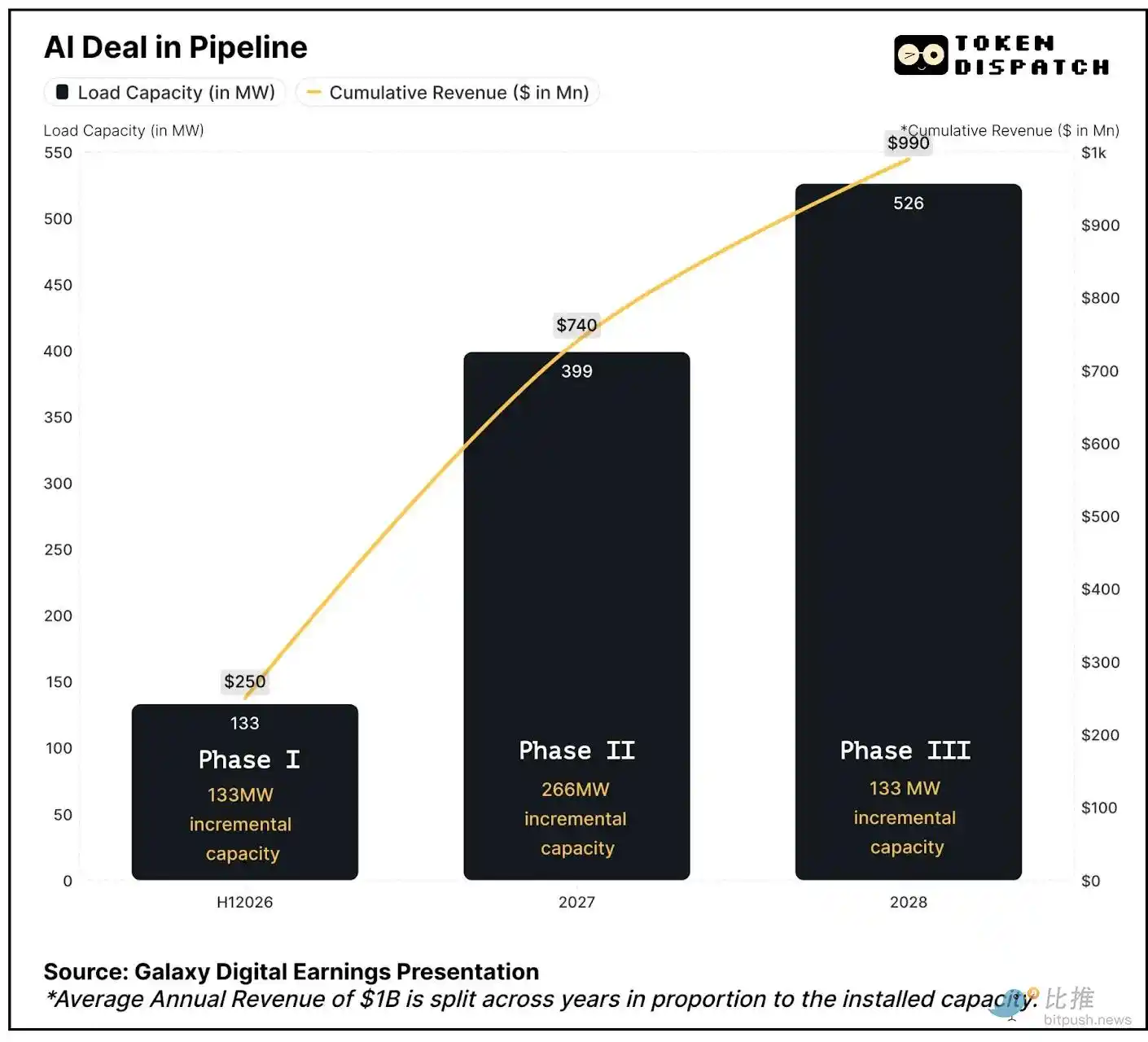
Cash Flow Equation
Galaxy's current cash flow exposes the unreliability of its trading business while highlighting why AI infrastructure can provide true financial stability. The company had $1.18 billion in cash and stablecoins at the end of Q2, which sounds like a lot, but there are more details behind it. Galaxy's trading business operates on a capital-intensive model, with margin lending requiring substantial cash reserves. Most of that $1.18 billion is not freely available.
The free cash flow that Galaxy actually generates is minimal. After paying $14.2 million in interest expenses and ongoing operational needs, the core business is nearly break-even on a cash basis.
This forces Galaxy to rely on the appreciation of the crypto market, namely its treasury and mining operations, to generate earnings to fund operations amid inherent cyclicality and unpredictability. In contrast, CoreWeave's three-phase contract structure and the high-profit nature of its business are likely to create positive cash flow immediately.
Even if the profit margin is not as high as 90%, a more reasonable 40-50% profit margin is still more reliable and stable than the cyclical treasury division.
Unlike the trading business, which requires continuous capital investment in working capital and technological infrastructure, data center operations generate cash that can be reinvested in expansion or returned to shareholders.
Galaxy's recent Helios project financing helps address cash flow issues. By securing dedicated construction funding, Galaxy separates infrastructure development from its operational cash flow needs. This is impossible in trading business expansion, as it requires balance sheet capital that competes directly with other business needs.
Expense Details
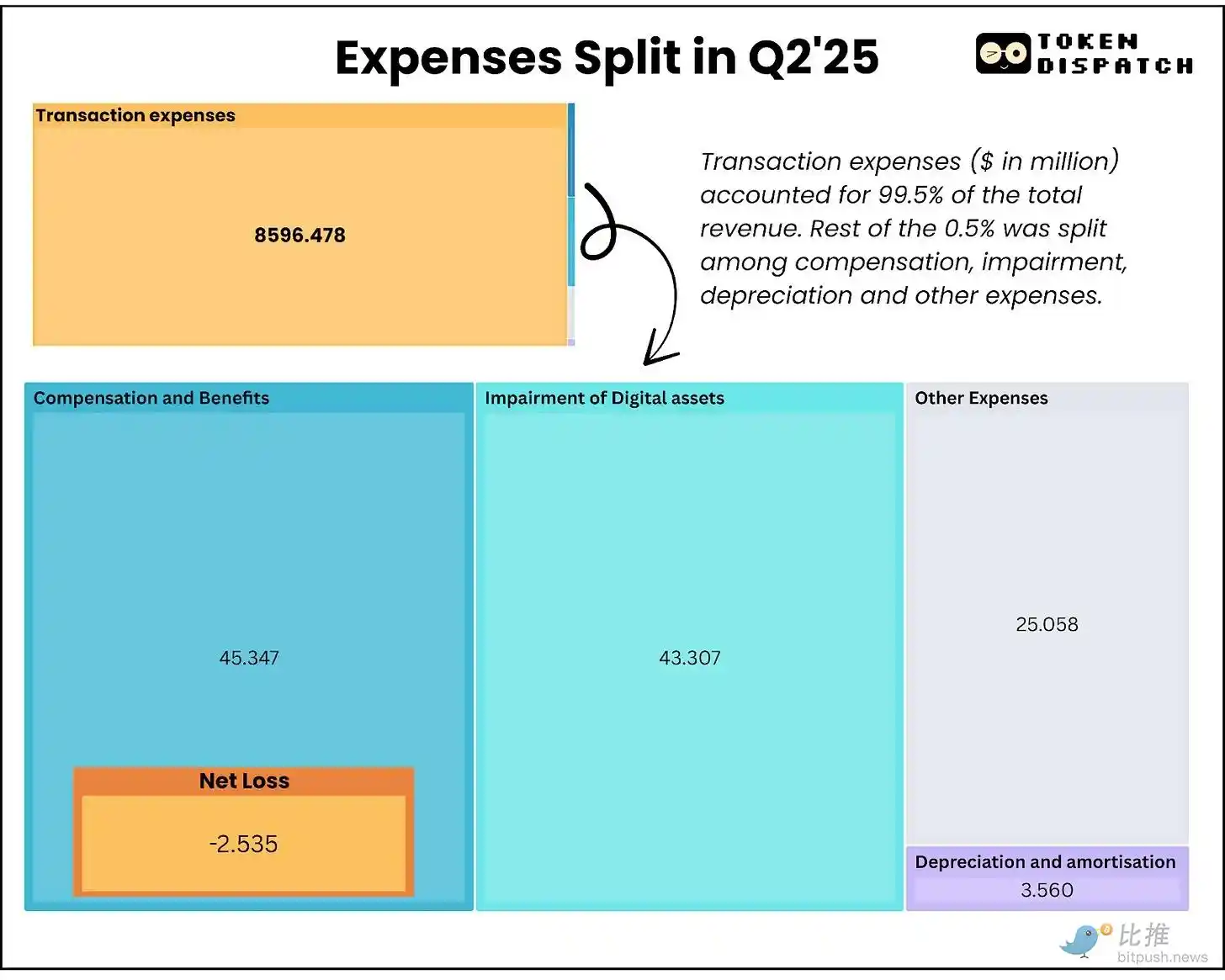
The total expenses for the digital asset division were $8.714 billion, with trading expenses accounting for the vast majority ($8.596 billion). These are purely transactional costs with almost no markup opportunities. Since they are unavoidable in a commoditized trading business, and with spreads continuing to compress, Galaxy has little ability to optimize these costs.
More concerning is that quarterly payroll expenses include $18.8 million in equity incentives, which must be paid in cash. This means that Galaxy's spending on retaining talent exceeds the earnings generated by its core business ($13 million).
The transformation to AI infrastructure will help change this situation. Once the facilities are operational, the variable costs required for data center operations are minimal. For example, Galaxy's entire digital asset business had an adjusted gross profit of $71.4 million in Q2. Under full utilization, just the first and second phases of Helios (approximately 400MW) could potentially generate $180 million in quarterly revenue, with operational complexity and costs being only a small fraction of that.
Market Reaction
Galaxy's stock price rose moderately by 5% within 24 hours of announcing its Q2 financial report and surged about 17% in the following week, before investors pulled out their funds.

This is likely because investors realized that $211 million in earnings included $180 million from non-cash adjustments and treasury earnings, rather than operational improvements. Investors may not have yet factored in Galaxy's complex AI infrastructure transformation, as meaningful data center revenue is not expected until the first half of 2026.
Given everything that is about to happen, I remain optimistic about the long-term sentiment. The additional 2.7GW capacity currently under study by ERCOT indicates that Galaxy aims to solidify its position as a long-term infrastructure provider, rather than just a single-tenant facility operator.
Once fully developed, Galaxy's operations in Texas could rival some of the largest hyperscale data center campuses operated by Amazon, Microsoft, and Google. This scale could provide leverage in negotiations with more AI companies while creating operational efficiencies to enhance profit margins. The company's crypto-native expertise gives it a unique positioning in the emerging intersection of AI and blockchain technology.
The Road Ahead
Galaxy is making a massive, all-or-nothing bet.
If the AI infrastructure transformation is successful, they will transition from a profit-squeezed trading company to a cash-generating machine. If it fails, they will have spent billions building expensive real estate in Texas while their core business slowly dwindles.
The $1.4 billion in project financing validates external confidence, but I am watching two key indicators: whether they can actually deliver 133MW of AI facilities before the first half of 2026, and whether that 90% profit margin can be maintained when they start incurring actual operating costs. Current operations provide enough cash flow to sustain operations, but meaningful growth investments require a sustained rally in the crypto market. The AI infrastructure opportunity promises stable and reliable revenue-generating potential, and its success entirely depends on execution over the next 18-24 months.
The recent completion of project financing has eliminated a significant execution risk, but Galaxy must now prove that they can successfully transform crypto mining infrastructure into enterprise-grade AI computing facilities to attract long-term bets from investors. Until then… stay curious.
免责声明:本文章仅代表作者个人观点,不代表本平台的立场和观点。本文章仅供信息分享,不构成对任何人的任何投资建议。用户与作者之间的任何争议,与本平台无关。如网页中刊载的文章或图片涉及侵权,请提供相关的权利证明和身份证明发送邮件到support@aicoin.com,本平台相关工作人员将会进行核查。




